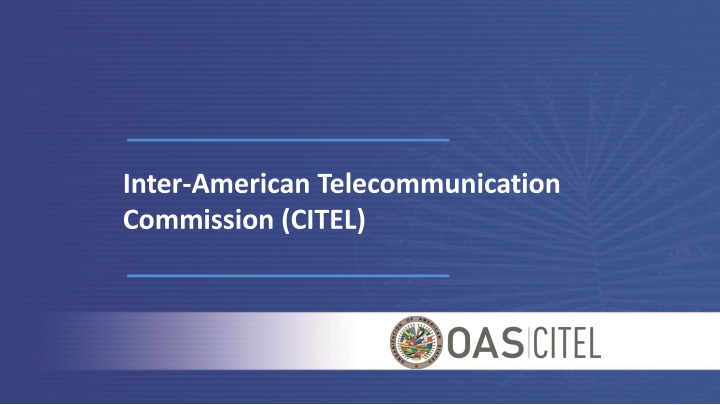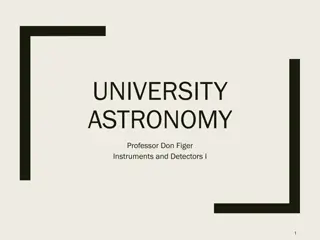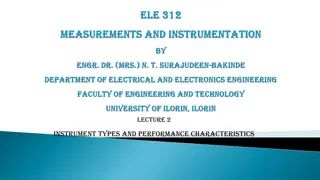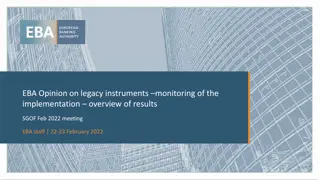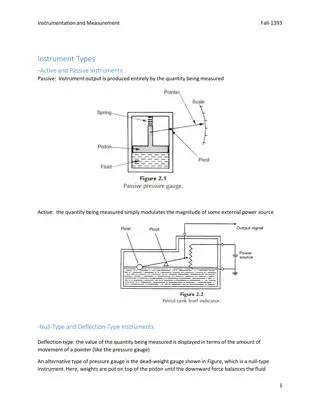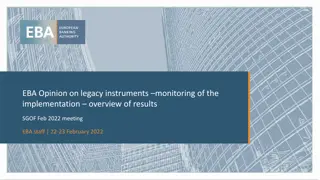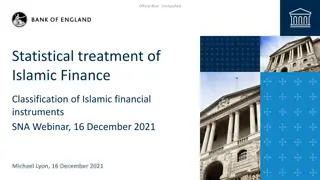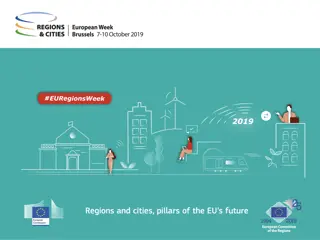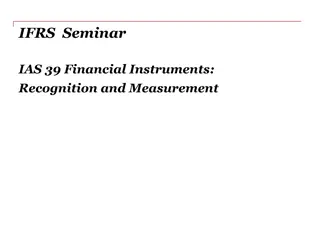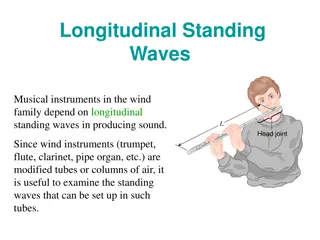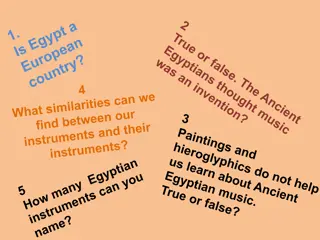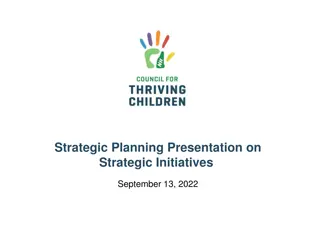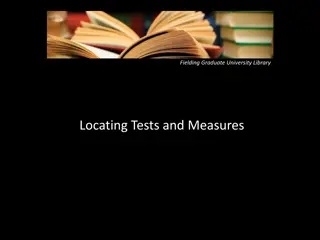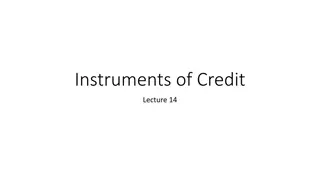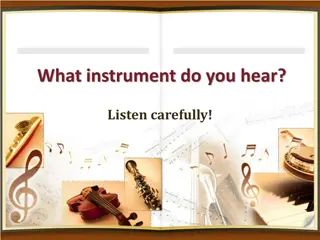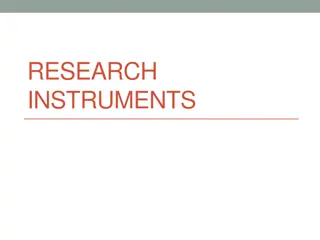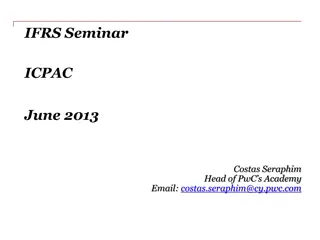CITEL Working Instruments and Strategic Initiatives for Radiocommunications
Inter-American Telecommunication Commission (CITEL) plays a crucial role in coordinating strategic initiatives related to radiocommunications within the OAS. The Permanent Consultative Committee II (PCC.II) focuses on radiocommunications and works towards preparing for World Radiocommunication Conferences. CITEL's working instruments include Preliminary Views, Preliminary Proposals, Draft Inter-American Proposals, and Inter-American Proposals. Specific agendas such as regulatory provisions for sub-orbital vehicles and aeronautical mobile-satellite services are also discussed within CITEL's framework.
Uploaded on Sep 13, 2024 | 3 Views
Download Presentation

Please find below an Image/Link to download the presentation.
The content on the website is provided AS IS for your information and personal use only. It may not be sold, licensed, or shared on other websites without obtaining consent from the author.If you encounter any issues during the download, it is possible that the publisher has removed the file from their server.
You are allowed to download the files provided on this website for personal or commercial use, subject to the condition that they are used lawfully. All files are the property of their respective owners.
The content on the website is provided AS IS for your information and personal use only. It may not be sold, licensed, or shared on other websites without obtaining consent from the author.
E N D
Presentation Transcript
Inter-American Telecommunication Commission (CITEL)
Permanent Consultative Committee II: Radiocommunications (PCC.II) PCC.II RADIOCOMMUNICATIONS WG to Coordinate Strategic Initiatives of the OAS related to radiocommunicat ions WG relative to CITEL s Preparation for World Radiocommunica tion Conferences Ad Hoc Group on Resolutions, Decisions and Recommendation s of PCC.II WG on Satellite System and Scientific Services WG on Terrestrial Services WG on Spectrum Management WG on Broadcasting
CITEL Working Instruments for the WRC Preliminary View (PVP or PV) Preliminary Proposal (PP): a proposal that one (1) OAS/CITEL Member State presents to PCC.II, and that has not yet been supported by any other Member State. The PP is to be considered by the WG-WRC; with the objective of developing it into an INTER-AMERICAN PROPOSAL for eventual submission to the WRC. Draft Inter-American Proposal (DIAP): PRELIMINARY PROPOSAL which has been supported by at least one (1) other Member State. The DIAP is to be considered by the WG-WRC; with the objective of developing it into an INTER-AMERICAN PROPOSAL for eventual submission to the WRC. . Inter-American Proposal (IAP): DRAFT INTER-AMERICAN PROPOSAL, for which the PCC.II has ended its consideration and discussion as early as the LIMIT MEETING but not later than the FINAL MEETING and has been supported by at least 6 (six) Administrations, and which is not opposed by more than 50% (fifty per cent) of the total number of supports obtained.
SGT2 RADIOLOCATION, MARITIME, AERONAUTICAL AGENDA ITEM 1.6 AGENDA ITEM 1.6: to consider, in accordance with Resolution 772 (WRC-19), regulatory provisions to facilitate radiocommunications for sub-orbital vehicles; BACKGROUND: Sub-orbital vehicles must operate in the same airspace as conventional aircraft while transitioning to and from space. Stations on board sub-orbital vehicles have a need for voice/data communications, navigation, surveillance, and telemetry and tracking and command (TT&C) applications to safely and effectively complete various mission requirements. The current regulatory provisions and procedures for terrestrial and space services may or may not be adequate for international use of relevant frequency assignments by stations on board sub-orbital vehicles. Preliminary views An administration considers to pursue studies called for by Resolution 772 (WRC-19) as a basis for possible new regulatory radiocommunications needs of sub-orbital vehicles. provisions to support the growing
SGT2 RADIOLOCATION, MARITIME, AERONAUTICAL AGENDA ITEM 1.7 . Agenda Item 1.7: to consider a new aeronautical mobile-satellite (R) service (AMS(R)S) allocation in accordance with Resolution 428 (WRC-19) for both the Earth-to-space and space-to-Earth directions of aeronautical VHF communications in all or part of the frequency band 117.975-137 MHz, while preventing any undue constraints on existing VHF systems operating in the AM(R)S, the ARNS, and in adjacent frequency bands; BACKGROUND The frequency band 117.975- 137 MHz is allocated on a primary basis to the AM(R)S service and used for air-ground, ground-air and air-air systems, providing critical voice and data communications for air traffic management and airline operational control on a global basis. Resolution 428 (WRC-19) invites WRC-23 to consider a new primary allocation to the AMS(R)S based on the results of sharing and compatibility studies. This new AMS(R)S service will support direct pilot-air traffic controller voice as well as data communications in oceanic and remote areas without modifying aircraft equipment. Preliminary Views: Some administrations support the ongoing technical and regulatory studies for co-existence between potential new primary AMS(R)S service in the frequency band 117.975 137 MHz and existing terrestrial primary allocated in-band and adjacent band services with the anticipation of providing space-based VHF communications between pilot and air traffic controllers. This potential new allocation must protect current systems using existing primary allocated services and not constrain planned usage of those systems.
SGT2 RADIOLOCATION, MARITIME, AERONAUTICAL AGENDA ITEM 1.8 AGENDA ITEM 1.8: to consider, on the basis of ITU-R studies in accordance with Resolution 171 (WRC-19), appropriate regulatory actions, with a view to reviewing and, if necessary, revising Resolution 155 (Rev.WRC-19) and No. 5.484B to accommodate the use of fixed-satellite service (FSS) networks by control and non-payload communications of unmanned aircraft systems. Preliminary views: Some administrations support completion of the studies called for by Resolutions 171 (WRC-19) and 155 (Rev.WRC-19) to define the conditions for operating UAS CNPC links in the FSS (see resolves 19 of Resolution 155 (Rev.WRC-19)) in the frequency bands for which No. 5.484B already applies. Based on the results of studies, to consider revisions to Resolution 155 (Rev.WRC-19) in order to finalize the provisions needed to accommodate the use of FSS networks by UAS CNPC systems and to revise No. 5.484B to provide clarity that the provisions apply to the use of earth stations on board unmanned aircraft.
SGT2 RADIOLOCATION, MARITIME, AERONAUTICAL AGENDA ITEM 1.9 Agenda Item 1.9: to review Appendix 27 of the Radio Regulations and consider appropriate regulatory actions and updates based on ITU-R studies, in order to accommodate digital technologies for commercial aviation safety-of-life applications in existing HF bands allocated to the aeronautical mobile (route) service and ensure coexistence of current HF systems alongside modernized HF systems, in accordance with Resolution 429 (WRC-19) BACKGROUND: The availability of digital technologies provides the opportunity to modernize aeronautical wideband (i.e. multiple 3 kHz channel aggregated contiguously or non-contiguously) communications in the High Frequency (HF) bands towards faster data rates and better voice communications. There is an operational need for the modernization of data link services in the HF band for messages related to the safety and regularity of flight for use by international civil aviation. Current aeronautical HF systems are limited by the available technology and are insufficient to meet many modern aircraft information requirements without being augmented by aeronautical safety satellite communications. It should be noted that existing aeronautical analogue voice and narrowband digital HF systems are the primary means for international and domestic aviation to communicate with aircraft in remote and oceanic areas beyond the range of terrestrial VHF radios. Preliminary Views Some administrations supports studies called for by Resolution 429 (WRC-19) to accommodate new digital HF technologies.
SGT2 RADIOLOCATION, MARITIME, AERONAUTICAL AGENDA ITEM 1.10 Agenda Item 1.10: to conduct studies on spectrum needs, coexistence with radiocommunication services and regulatory measures for possible new allocations for the aeronautical mobile service for the use of non-safety aeronautical mobile applications, in accordance with Resolution 430 (WRC-19); No CITEL views/positions at this time
CITEL's Preparation for World Radiocommunication Conferences. Working Group relative to CITEL's Preparation for World Radiocommunication Conferences. Chairman: Victor Martinez (MEX). victor.martinezv@ift.org.mx Vice-Chairwoman: Carol Sosa (CLM). carol.sosa@ane.gov.co Vice-Chairman: Kenji Kuramochi (PRG) kenji@conatel.gov.py SUB-WORKING GROUP ISSUES AGENDA ITEMS COORDINATOR VICE COORDINATOR MOBILE, FIXED & BROADCASTING SGT-1 1.1 ,1.2 ,1.3 ,1.4 ,1.5 9.1 C Amy SANDERS (USA) asanders@ntia.gov Jose COSTA (CAN) jose.costa@ericsson.com 9.2 TERRESTRIAL RADIOLOCATION, MARITIME, AERONAUTICAL SGT-2 Stephanie RICO GARCIA (MEX) stephanie.rico@ift.org.mx 1.6, 1.7, 1.8, 1.9, 1.10, 1.11 Michael RAZI (CAN) mrazi@parscom.ca SCIENCE SERVICES SGT-3 1.12, 1.13, 1.14, 9.1 A Seraf n CHAVEZ (MEX) chavez.serafin@aem.gob.mx 1.15, 1.16, 1.17, 1.18, 1.19, 7, 9.2 SATELLITE 9.3 SATELLITE SERVICES SGT-4 Afonso ROCHA (B) afonsor@anatel.gov.br Dionisio Manuel TUN MOLINA (MEX) tun.dionisio@aem.gob.mx 2, 4, GENERAL REGULATORY, FUTURE WORK & OTHER SGT-5 9.1B, 9.1D, 10 Carol SOSA L (CLM) carol.sosa@ane.gov.co Vice-Chairman: Kenji Kuramochi (PRG) kenji@conatel.gov.py
